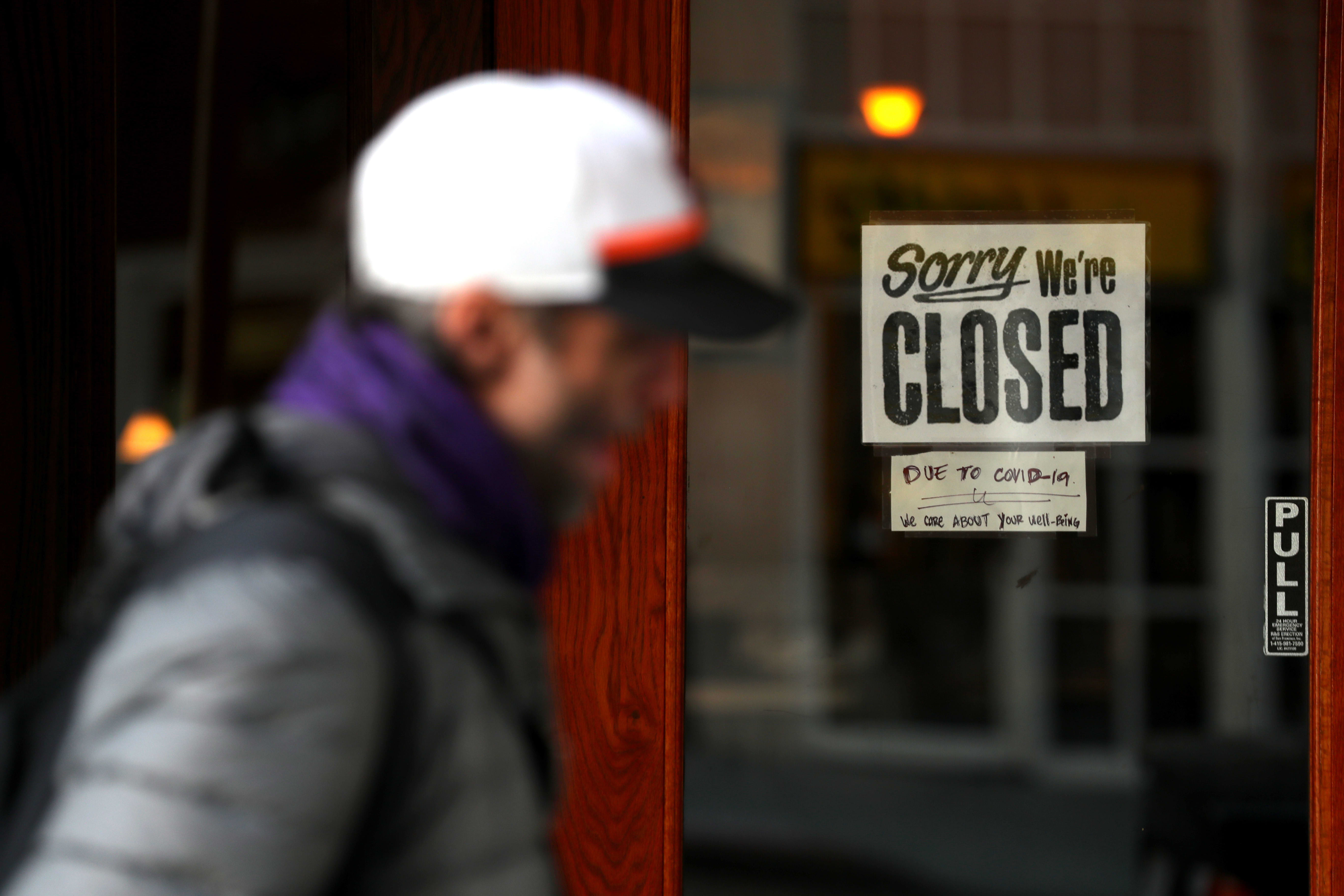States enduring the brunt of the coronavirus crisis are receiving a smaller proportion of emergency small-business loans than some Mountain and Midwest states, according to analysis conducted by the Federal Reserve.
“In New York, the epicenter of the coronavirus in the United States, less than 20 percent of small businesses have been approved to receive PPP loans. In contrast, more than 55 percent of small businesses in Nebraska are expecting PPP funding,” wrote Haoyang Liu and Desi Volker, two economists at the Federal Reserve Bank of New York.
For its study, the New York Fed used the number of coronavirus cases in a given state as a proxy to track changes in the economic impact of Covid-19 across the country. It then compared the differences in economic impact across states to the percentage of businesses in each state that has received Paycheck Protection Program loans.
What they found was that there isn’t a relationship between the intensity of the coronavirus impact in a given state and the percentage of that state’s businesses that are approved for PPP loans.
Specifically, the economists found that “there is no statistically significant relationship between the severity of the economic impact of COVID-19 — measured both in terms of cases and unemployment claims — and the share of small businesses getting PPP loans, after excluding New York and New Jersey.”
Source: Federal Reserve Bank of New York
The findings will likely fuel a principal complaint of the Small Business Administration’s program. Critics alleged that the PPP’s first-come, first-served basis has allowed regions of the U.S. with fewer Covid-19 cases to receive an inappropriate proportion of the funds.
The complaints allege that rural states with fewer coronavirus cases have been approved for too many of the PPP loans while states on the coasts grappling with the majority of U.S. Covid-19 cases have received too few.
A separate study, conducted by researchers at the University of Chicago’s Booth School, the Massachusetts Institute of Technology’s Sloan School and the National Bureau of Economic Research, found that only 15% of firms in congressional districts hardest hit by the coronavirus and job losses received loans in the first tranche versus 30% of firms in the districts least affected by the pandemic.
Source: Federal Reserve Bank of New York
To be sure, while some of these states have not seen as many coronavirus cases, many have been under similar stay-at-home orders which have shut down small businesses.
Congress in March approved the CARES Act, a $2.2 trillion piece of emergency legislation that provided nearly $350 billion in relief loans to the Small Business Administration for the PPP. The SBA was to extend to the nation’s mom-and-pop businesses struggling to meet payroll costs thanks to the impact of Covid-19.
Demand was so great for the funds that the program was oversubscribed by April 16, forcing lawmakers to pass a new bill replenishing the fund with another $310 billion. The SBA began approving loans again on April 27.
But the program has faced a deluge of complaints since its launch, including the skewed distribution of funds across geography.
The New York Fed economists hypothesize that, instead of the frequency of coronavirus cases, the percentage of state businesses receiving PPP loans may be related to the proportion of a state’s businesses serviced by small community banks.
“Community banks have been reported to view PPP as a chance to expand their customer base. The four largest banks in the United States represent a significant share of the depository base but have (at most) a combined 12 percent share of the total amount lent through the PPP,” Volker and Liu wrote.
Source: Federal Reserve Bank of New York
“Moreover, the fifteen largest banks originating PPP loans have just a combined 26 percent market share of the total dollar amount lent,” they added. “It seems therefore that medium-sized and small banks, including community banks, are important in channeling PPP funding.”
The Fed economists found that there appears to be a strong correlation between a state’s percentage of small businesses that received bank financing in 2019 and the state’s percentage of small businesses that have now received PPP loans. This result suggests that banks are prioritizing their own, pre-existing customers when debating which applicants to approve, the economists say.
Another source of outrage over the PPP began after reports that large companies with access to the public capital markets tapped the facility for hundreds of millions of dollars while thousands of far smaller firms were left without an alternative.
The public backlash against public companies taking the loans was so fierce that it forced many to reconsider and return the funding even though they may have filled out their SBA applications truthfully.
Shake Shack, for example, said it returned the $10 million it got through the PPP after it sold $150 million in new shares. Ruth’s Hospitality and Fiesta Restaurant Group later did the same.
Read more of CNBC’s coronavirus coverage here. Subscribe to CNBC PRO for exclusive insights and analysis, and live business day programming from around the world.
